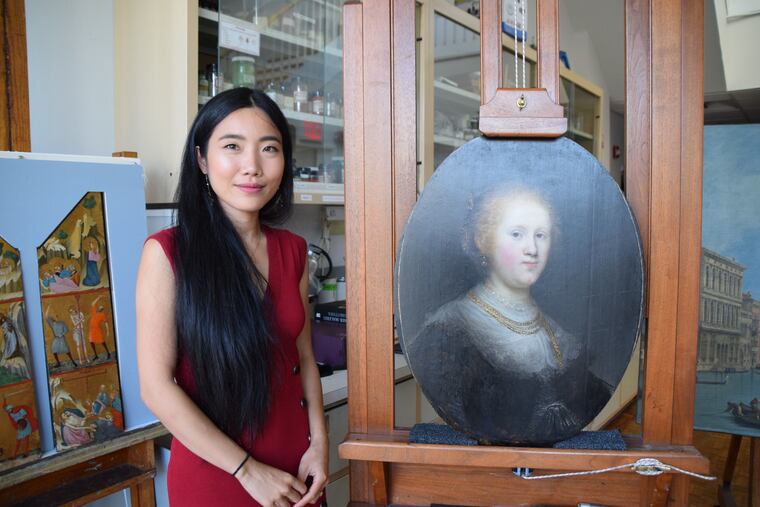Allentown finds it has a Rembrandt in its art museum
A portrait of a young woman painted in 1632 has been definitively identified as being from the hand of the master himself.

It’s not as though the Allentown Art Museum was hiding a Rembrandt in the attic or something.
Their Rembrandt was hiding in plain sight — on the wall of a gallery.
Since the 1970s, Portrait of a Young Woman hung in Allentown, attributed to Rembrandt’s studio — a work which may have benefited from the eye of the master, but was actually executed by his assistants.
But then, two years ago, Young Woman went out for cleaning and conservation, multiple layers of varnish and non-original paint were removed, scholars pored over her.
And when she returned a few months ago, she basked in the firm conclusion that, yes, this was a work by Rembrandt himself.
“It’s very exciting, for sure,” Elaine Mehalakes, the museum’s vice president of curatorial affairs said Monday.
Young Woman has returned to Allentown and is quietly waiting in storage for a triumphant exhibition opening June 7.
» READ MORE: In Philly museums this spring: Suffrage, scandal, sloths
The painting was donated to the museum in 1961. It had been in a royal collection in Paris and an aristocratic collection in England prior to crossing the Atlantic and eventually joining the collection of the Samuel H. Kress Foundation.
At the time of the 1961 Kress donation to Allentown, Young Woman was thought to be by Rembrandt and was exhibited as such. But in 1970, the Rembrandt Research Project, a Dutch scholarly organization devoted to evaluating all works attributed to the master, came calling.
They studied the Young Woman, noted the absence of sparkling light, the questionable brushstrokes, the overall murk, and determined that, no, Young Woman came from Rembrandt’s studio, but not from his hand.
Young Woman thenceforth was attributed to the studio — a fate suffered by many paintings examined by the Research Project. As Mehalakes noted, Rembrandt attributions were “in flux for many years” all over the world, particularly in the later part of the 20th century.
Meanwhile, conservators and curators with the Kress Foundation, keeping an eye on the foundation’s donations of artworks around the country, showed up in early 2018 at Allentown and determined that Young Woman was overdue for cleaning and conservation.
“They said, ‘We’d like to remove some of the old varnish and clean the surface,’” Mehalakes recalled. “'Maybe do a little more research. Maybe have some scholars take a look.'”
So off she went to the Conservation Center, Institute of Fine Arts, New York University, where conservator Shan Kuang labored over the oil on wood panel.
Looking at Young Woman before work began, she said, was akin to looking at it through a “dirty windshield,” varnish, grime, and errant paint so obscured the original painting.
Young Woman was subjected to analysis via x-radiography and infrared reflectography — which allowed conservators to look beneath the immediate paint surface and analyze what was done beneath it and in what sequence.
What conservators call overpainting — later paint added by restorers or even dealers in an effort to spruce up an artwork — was meticulously taken off. Thick layers of varnish, which washed over the original painted surface like mudflows, were removed.
Mehalakes said defining elements of Rembrandt’s technique — fine brushstrokes, small touches of reflected light, subtle color changes, sparkling surfaces — were exactly the signature techniques obscured by the multiple layers of varnish, dirt, and overpainting.
“It couldn’t be evaluated clearly,” she said.
But now, a viewer can “see the original brushstrokes and the colors are bright” as they would have been when the painting was finished by Rembrandt nearly 400 years ago.
“It glows,” said Mehalakes. “It’s a revelation.”
“We had no idea that this would happen," said Mehalakes. “It’s like unraveling a mystery. It’s what every museum hopes.”